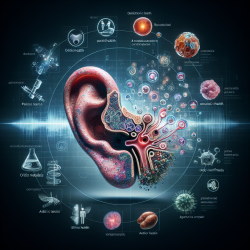Introduction
In the quest to enhance educational outcomes and promote healthier lifestyles among children, the integration of physically active learning (PAL) into school curricula has emerged as a promising approach. The research article "Implementing Physically Active Learning: Future Directions for Research, Policy, and Practice" provides a comprehensive exploration of the multifaceted benefits and challenges associated with PAL. This blog aims to distill the key findings of the research, offering actionable insights for practitioners eager to implement PAL in their educational settings.
Understanding the Benefits of PAL
Research has consistently demonstrated that PAL can significantly enhance physical activity levels, cognitive function, and academic performance among students. By incorporating movement into traditional learning environments, educators can create dynamic and engaging classrooms that foster both physical health and intellectual growth. The integration of PAL not only addresses the increasing sedentary behaviors among children but also leverages physical activity as a tool to improve educational outcomes.
Key Insights for Practitioners
1. Enhancing Teacher Competence and Confidence
One of the primary barriers to the successful implementation of PAL is the lack of teacher confidence and competence. Educators need to be equipped with the necessary skills and knowledge to effectively integrate physical activity into their teaching practices. Professional development programs and resources that focus on PAL can empower teachers to confidently embrace this innovative approach.
2. Leveraging Diverse Learning Environments
PAL encourages educators to think beyond the confines of the traditional classroom. Utilizing spaces such as playgrounds, school halls, and outdoor areas can provide students with varied and stimulating learning experiences. By embracing these diverse environments, educators can facilitate more vigorous physical activity and enhance student engagement.
3. Building a Supportive School Culture
For PAL to be successfully integrated into school curricula, it must be supported at all levels of the educational system. School leadership, including principals and governors, play a crucial role in fostering a culture that values and prioritizes physically active learning. Additionally, parental support and community involvement can further bolster the implementation of PAL initiatives.
Future Directions for Research and Policy
The research underscores the importance of continued exploration into the effectiveness and sustainability of PAL. Future studies should focus on establishing a robust evidence base that highlights the long-term benefits of PAL on academic achievement and health outcomes. Furthermore, national education and health policies should be aligned to support the widespread adoption of PAL, with an emphasis on embedding it within initial teacher training programs.
Conclusion
The integration of physically active learning into educational settings holds the potential to transform the way we approach teaching and learning. By addressing the challenges at the classroom, school, and national policy levels, educators can create environments that not only enhance academic performance but also promote lifelong health and well-being. Practitioners are encouraged to explore the possibilities of PAL and contribute to the growing body of research that supports its implementation.
To read the original research paper, please follow this link: Implementing physically active learning: Future directions for research, policy, and practice.










